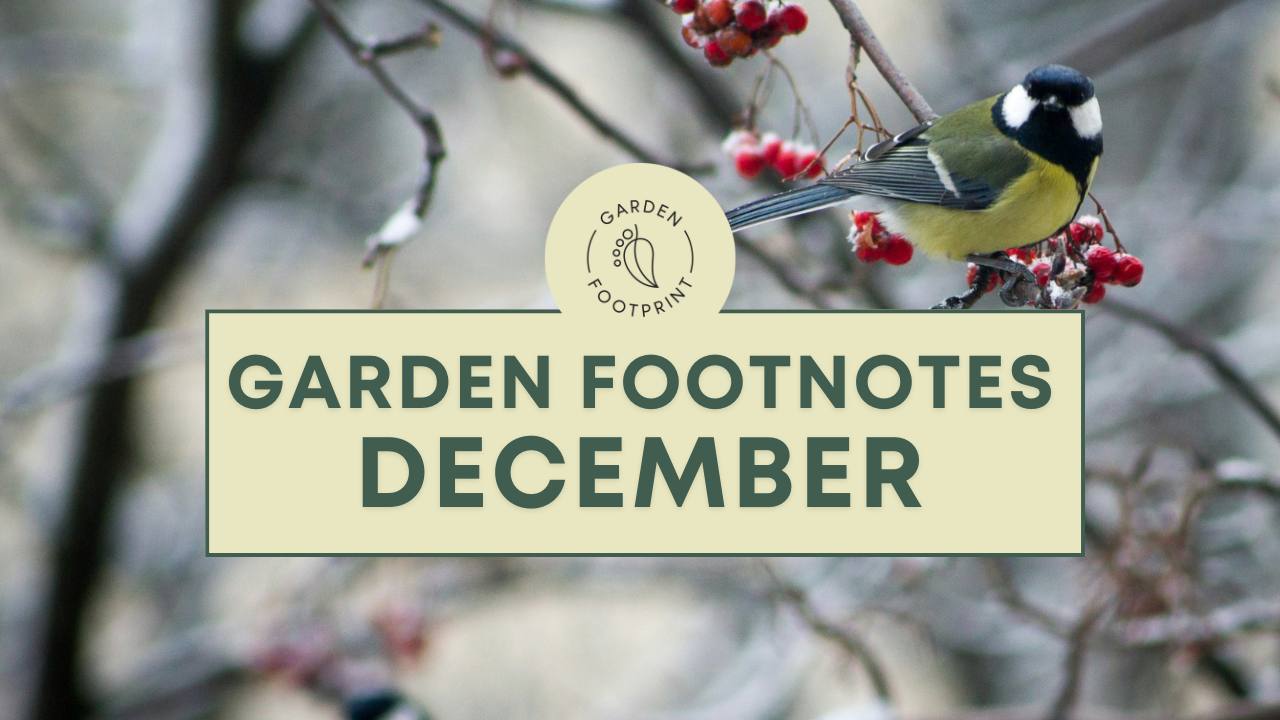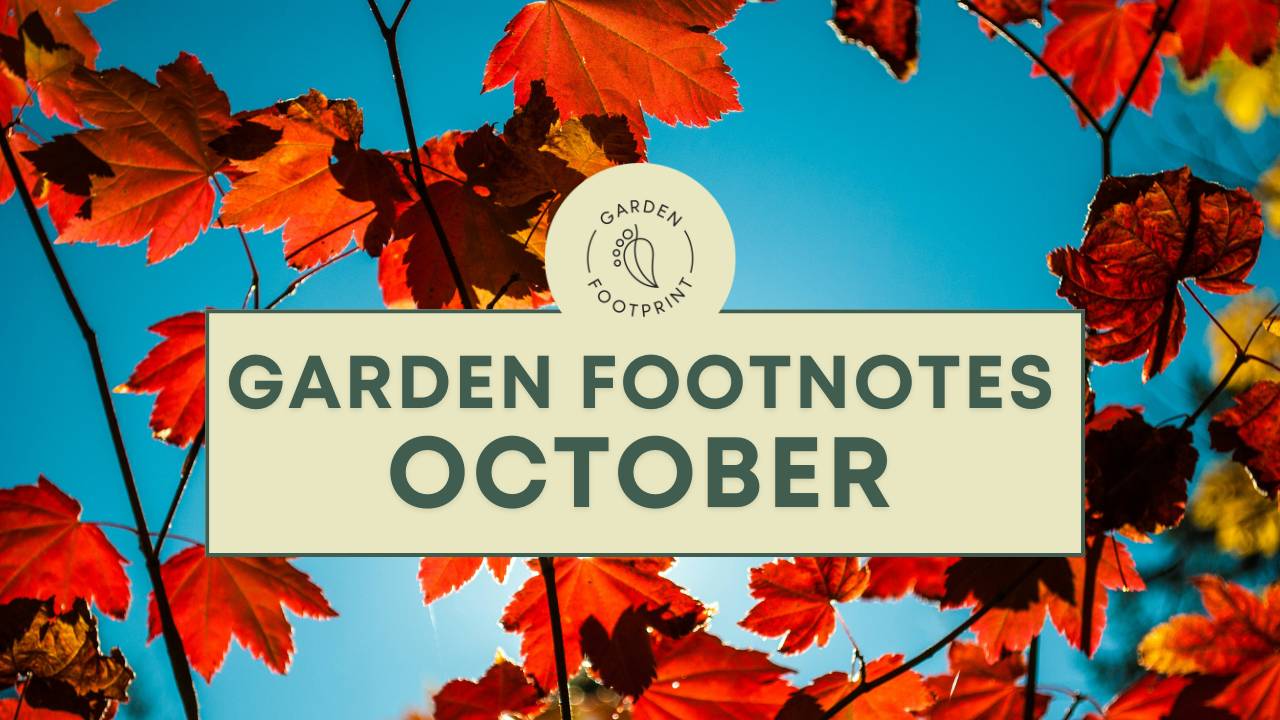November: Plant once, enjoy for years
Short days, soft ground — perfect conditions for bare-root planting. A couple of well-chosen trees/shrubs now will give you food, structure and shade with almost no ongoing faff.
Jobs this month (time-poor friendly)
-
Get bare-roots in the ground. Fruit trees, currants, and the start of an edible hedge (“fedge”). Help soil to settle round roots by watering in well.
-
Protect without plastic. Re-use old guards or go biodegradable; tie to low, sturdy stakes. Use soft ties like bike tyre inner tubes (free punctured ones from bike shops!)
-
Mulch only after rain. If the soil’s damp, add an organic mulch around new plants (keep it off trunks). If beds are awkward to access, wait for spring right after cutting-back perennials — that’s the most practical moment.
-
Lawn notes. If it’s mild, this is the window for scarifying and over-seeding; skip it during frost or water-logging.
-
Leave standing stems. Perennials stay put for winter habitat and good bones in the border. We’ll cut back when we see new growth in spring.
-
Notebook out. Sketch where a small orchard or fedge could live. (I keep mine rough — the garden isn’t perfect, but it works.)
Plant spotlight: Aronia ‘Nero’ (chokeberry)
Tough, good-looking, ridiculously low-maintenance. Spring blossom for pollinators, glossy leaves that colour up, and vitamin-rich berries for juice/jam. Happy in ordinary soils, even a bit wet.
Why now? Bare-root plants establish fast in cool, moist soil.
Hardiness: USDA 3–7 (≈ –35 °C), so bullet-proof across the UK and most of the US.
(Note for US readers: if you’re tempted by Autumn Olive as a nitrogen-fixing edible, check local regulations — it’s invasive in many states. Aronia gives you fruit without the headaches.)
A quick Cornish note (for Global Gardeners)
Here we plant with wind and salt in mind. If you garden in coastal Oregon, New England or NZ’s milder zones, the same principles apply: research the salt-tolerance of your specimen plants. If they can't handle salt-laden winds make sure they sit behind a salt tolerant windbreak (like sea buckthorn, tamarisk or Eleagnus x ebbingei.
Stake young trees and shrubs low, with soft ties to protect bark and inspect them regularly. 'Root rock' really slows growth so it's worth getting right.
If you want a hand
-
Create an Accurate Garden Plan — how to create a simple digital blueprint so you can measure areas, estimate materials, and hand clear instructions to a gardener without over- or under-ordering.
-
30 Plants to Beat the Weeds — ideas to fill any new bed edges before weeds do.
-
All freebies live here
Enjoying Garden Footnotes? Share this with a friend — or sign up here to get the next issue by email.
Wishing you easy wins this month,
Mike
Garden Footprint — real gardens that give more than they take





Responses